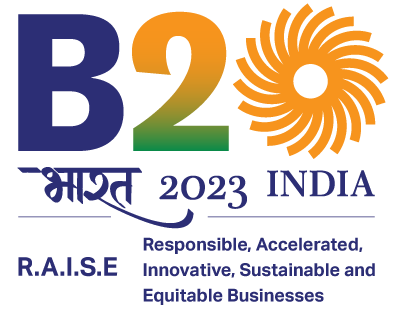The future of supply chains rests on three key concepts: sustainability, resilience, and circularity. In an exclusive interview with Sonal Desai, Managing Editor, ESGNews.earth, Bhupendra Kumar, a senior supply chain specialist and Certified Green Supply Chain Professional from CII, discusses the evolution of supply chains from a focus on cost and efficiency to now prioritizing sustainability and resilience.
Supply chains have evolved from a focus on cost and efficiency to now prioritizing sustainability and resilience. In your view, what have been the most significant technological and philosophical shifts driving this evolution over the last decade, and what emerging trends do you see shaping the supply chain of tomorrow?
Over the last decade, supply chains have undergone a profound shift driven by both awareness and technology. Earlier, efficiency and cost reduction were the primary goals, but increasing recognition of the environmental and social consequences of our actions has reshaped priorities. Organizations now view sustainability and resilience as essential, not optional.
Technological advancements have played a central role—digitalization, IoT, AI, and blockchain now allow us to measure emissions, track supply networks in real time, and evaluate the broader impact of decisions. This ability to quantify and analyze has enabled businesses to not only identify inefficiencies but also to explore alternative, greener solutions. At the same time, global unpredictability—geopolitical tensions, pandemics, and trade disruptions—has highlighted the risks of overly lean, cost-driven models, making resilience as important as efficiency.
Looking ahead, supply chains will increasingly be data-driven, adaptive, and carbon-conscious. Emerging trends include rapid development of alternative sourcing and transportation strategies, stronger integration of predictive analytics, and a push toward circular supply chains. The philosophy is shifting from short-term gains to long-term responsibility, where reducing the carbon footprint and building agility will define the supply chain of tomorrow.
ESG is no longer a buzzword; it’s a critical framework for business success. From a supply chain perspective, how are the ‘E,’ ‘S,’ and ‘G’ pillars interconnected, and what is the single biggest challenge companies face in truly embedding ESG principles deep into their operations and throughout their value chain?
In supply chains, the three ESG pillars are deeply interconnected. The ‘E’ (Environment) focuses on reducing carbon footprints, energy use, and waste across sourcing, production, and logistics. The ‘S’ (Social) ensures fair labor practices, worker safety, and respect for communities—issues that directly influence supply chain credibility and resilience. The ‘G’ (Governance) underpins both by driving transparency, ethical procurement, and accountability across the value chain. Without strong governance, environmental and social commitments remain surface-level.
The biggest challenge, however, lies not in drafting policies but in embedding ESG as a culture rather than a compliance exercise. Many organizations struggle with translating ESG principles into day-to-day decisions at the ground level, especially in extended and fragmented supply chains. This gap often stems from limited understanding, misalignment of incentives, and resistance to change among stakeholders. True impact requires continuous education, alignment of values, and integration of ESG into operational DNA so that sustainability and responsibility are seen not as obligations but as core business practices.
Large corporations have the resources and a clear business case to invest in sustainable supply chain ecosystems. However, the smaller suppliers and partners at the lower tiers of the value chain often struggle with the financial and logistical burden. What are the key strategies and collaborative models that bigger players can use to effectively support and incentivize their smaller partners in this sustainability journey, and what are the risks if they fail to do so?
Larger corporations hold the leverage to create a ripple effect across supply chains by supporting smaller partners in their sustainability journey. Key strategies include preferential sourcing and awarding more business to smaller suppliers who demonstrate faster adoption of green practices, offering financial or contractual incentives such as longer-term agreements, and providing capacity-building support through frequent vendor trainings, toolkits, and ground-level awareness programs. Such efforts reduce the knowledge and cost barriers smaller players face while embedding sustainability deeper into the value chain.
Collaborative models like shared platforms for carbon measurement, joint investments in clean technology, and consortium-based initiatives (e.g., the Sustainable Apparel Coalition’s Higg Index or CDP Supply Chain program) have shown global success in bringing diverse suppliers onto a common framework. Larger players can also facilitate access to green financing or co-develop circular solutions with smaller vendors.
If bigger players fail to act, risks include fragmented supply chains, reputational damage, non-compliance with tightening regulations, and losing customer trust. Conversely, by enabling smaller partners, corporations not only strengthen resilience but also accelerate industry-wide transformation, proving that sustainability is most impactful when inclusivity and collaboration drive adoption at every tier.












